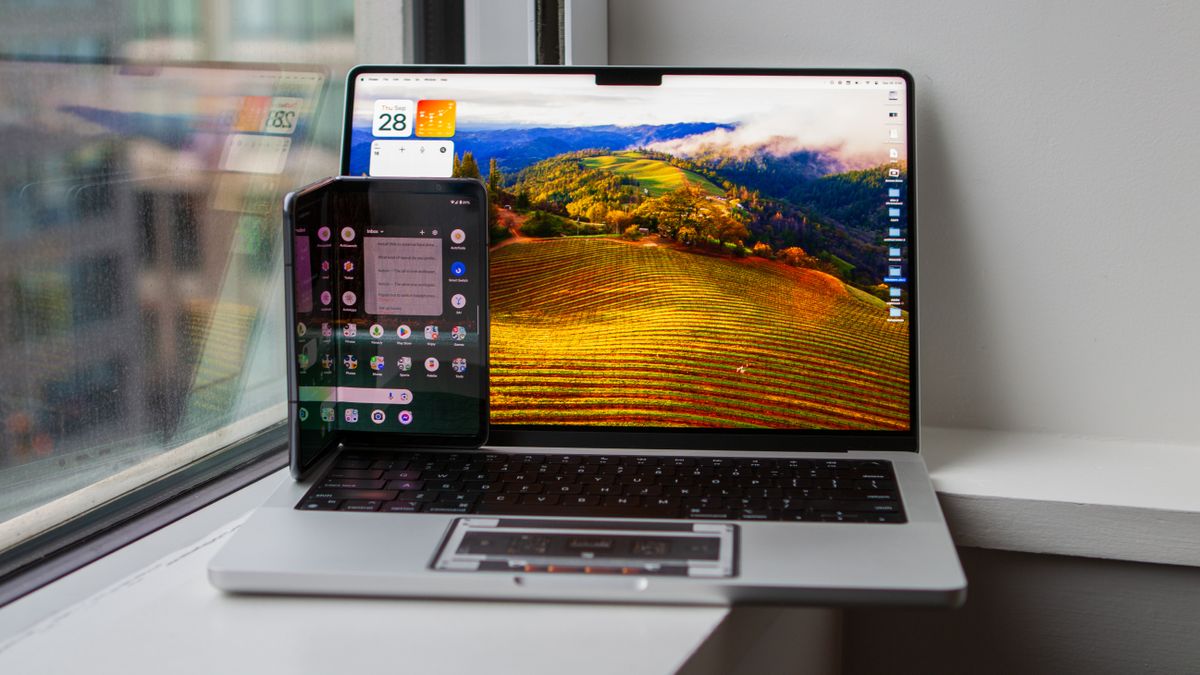Something that many of us in the tech space have been harping on is a more cohesive experience between devices. By and large, Apple has set the standard with features such as Continuity, offering better interoperability between your Apple devices. One of the biggest examples of this is AirDrop, which allows you to seamlessly transfer files from your iPhone to your Mac or vice versa.There are ways to do this with Android and other computers, but in many cases, it’s limited by what the manufacturer can offer. For example, if you own the Galaxy Book 3 Ultra and Galaxy Z Fold 5, you can rely on Multi Control. This lets you basically turn your phone into another monitor, with the added benefit of being able to use your laptop’s keyboard and mouse on the phone.But what about if you love using the best Android phones but prefer the experience and power offered by a Mac? Until fairly recently, the easiest way to transfer files was to just upload them to Google Photos or Drive from the phone, then hop over to the Mac to see them (or vice-versa.) Yes, there’s the Android File Transfer for Mac, although it barely works on a good day and is definitely not reliable. Fortunately, thanks to the work of developers, there are more reliable options.Bridging the gap between Android and Mac(Image credit: Andrew Myrick / Android Central)The first app that I want to mention actually brings Google’s Nearby Share functionality to your Mac. Aptly named NearDrop, this is “an unofficial Google Nearby Share app for macOS.” All you need to do is download and install the app on your Mac from the Github repository.From there, grab your phone, find some files you want to move over, and then open up the native Nearby Share functionality. Your Mac will appear in the list of available devices, so just tap the name of your Mac and then look out for the confirmation in the notifications on your Mac.While I haven’t run into any problems using NearDrop, there’s another app that actually simulates the AirDrop experience. This means that your Mac will think that it’s receiving files from an iOS or iPadOS device, and just automatically download them without worrying about accepting the transfer.You might have seen a video or two circulating that talks about an app called WarpShare. Through some kind of magic, this open-source app simulates the AirDrop experience almost perfectly. It’s not the most elegantly designed app out there, but that doesn’t matter for those of us who care more about functionality than anything else.(Image credit: Andrew Myrick / Android Central)There are downsides to these apps, as it’s really only a “one-way” street, meaning that you can only go from Android to macOS, not the other way around. Chances are that this isn’t too much of a problem, but you can always rely on good ole’ Google Drive or Photos if you have a file on your Mac that you need on your Android phone.There are easy ways to send files to your Mac or connect to your Android phone’s hotspot.Since Apple seems to hate the idea of putting an LTE or 5G chip into any of its MacBooks, we’re instead left to jump through a bunch of hoops to connect to our phone’s hotspot.The third app I want to talk about doesn’t have a fancy name and is simply called “Cellular.” Once you download the app on your Mac and the Companion app on your Android phone, it’ll automatically connect to your phone’s hotspot when needed. So, if you’re using your MacBook and you’re out of range of a “trusted network,” your Android phone will pick things right back up for you.(Image credit: Andrew Myrick / Android Central)You can go through and set up which Trusted Networks you rely on so that the app knows when to switch over to your Android phone. Cellular also includes toggles to disconnect from your hotspot when your Mac is put to sleep and even when your phone’s battery is below a certain percentage.Thank developers(Image credit: Andrew Myrick / Android Central)None of this would be possible if it weren’t for those who have the same frustrations as those who prefer using Android and macOS. The world of Android apps goes far beyond what you’ll find on the Play Store, as you can quickly get lost in a lot of cool and awesome apps on F-Droid or even Github.Making matters even more exciting is that two of the three apps are open source, making it possible for other developers to pick up the project or maybe even add new features down the road. And even with Cellular, it’s a fairly basic app that gives you control over determining what options you want enabled or don’t.All of this goes to show us or even remind us of what’s possible and how everything can be improved with just a couple of apps and the help of developers willing to make them.
Using a Mac with Android has never been better, thanks to developers


